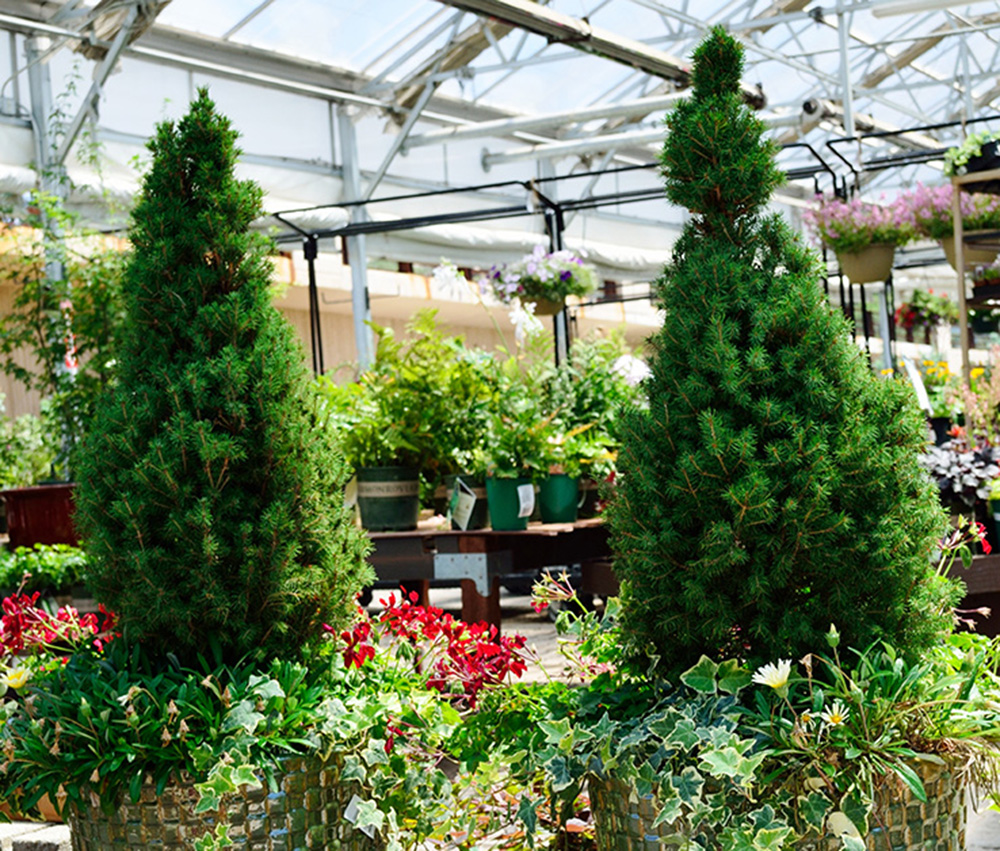By Lisa Watters-Lain, Arizona’s garden gal
Container gardening is very easy, but there are secrets to ensure big, bold, overflowing pots to decorate your spring landscape. With more than 50 large container gardens in my personal gardens, I’ve learned a lot from MY mistakes! However, here’s a head start to successful containers and the most common mis-steps for you to avoid that local gardeners, myself included, have made.
1
Filling a large container in the wrong place – Ever tried to lift and move a large container garden filled with soil and plants? Even with a dolly it can be impossible! When using a large or unwieldy container make sure to position it at its final resting place; THEN fill and plant the pot.
2
Selecting plants with different requirements – Make sure all the plants in your container garden share the same sun, soil, and water requirements. Here at Watters Garden Center we group companion plants together guaranteeing that plants in each container not only look good together, but thrive from the same growing conditions.
3
Buying weak or sickly plants – Buying plants at a reputable local nursery, like Watters, is a good place to start in your quest for healthy plants. You know that you will be getting plants that are disease- and pest-free and better cared for than plants from a big box store. You’ll also find a wealth of information and advice from the on-site knowledgeable staff.
4
Awkward plant to pot ratio: Consider the proportions of plants to container size and space. A large container stuffed with short plants can look stunted and scroungy. A rule of thumb, and remember that some rules are meant to be broken, is to have at least one plant the same height as the container is tall. Also, plants that spill over the sides add to a pleasant ratio.
5
Overwatering Plants – When leaves turn limp and yellow and fall off or the plant stops blooming, it’s certain that the container’s soil is staying too wet. Make sure your containers have drainage holes. Before you water, check if the soil is still moist. Put your finger into the soil up to your second knuckle; water when the soil that far down is dry.
6
Underwatering Plants – Most container gardens need watering at least once a day during the warm months. Small containers and hanging planters may need water more often because there is less soil to retain moisture. Remember to water until you see seepage coming out the bottom of the pot.
If your plants dry out, don’t despair; even the most pathetic, limp plant can revive with a good drink. If the container is small enough, submerge the whole thing in a bucket of water until the air bubbles subside. For a large container take a skewer or slender stick and gently poke holes deep into the soil to allow water to reach the roots.
Aqua Boost Crystals – These water retaining crystals solve dry soil issues for mountain landscape containers. They hold water at root level and release it as plants need it. Not only do these unique Watters crystals keep water close to the roots, they also encourage deeper root growth. They are a must for small containers and hanging baskets. Wherever they’re used they cut water usage in half.
7
Starving your plants – Nutrients that were in your potting soil are either quickly used by the plants or washed out with repeated watering. Feeding container gardens regularly is a key to success. Start with Watters 7-4-4 All Purpose Food to top off your finished, newly planted container garden. Then push intense color and blooms with ‘Watters ‘Flower Powers 54’ water soluble container food used at two-week intervals. Watch the garden magic happen with this feeding regimen!
8
Fear of pruning – When your container garden looks leggy or ragged, don’t be afraid to cut back its unsightly plants. Chances are that with good “haircuts” they’ll come back healthier and happier.
9
Living with sickly plants – When you’ve tried everything, short of mouth-to-mouth resuscitation, and a plant still looks dreadful, cut your losses and toss it onto the compost pile or into the trash. If only one plant in your container garden is icky, pull it out and replace it. Your other plants will thank you for eliminating possibly contagious diseases.
Remember, this isn’t brain surgery –- there’s a lot of room for error. Have fun and experiment! Whatever your lifestyle or personality, you can create container gardens that will fill you with joy and bring beauty to your surroundings.
Lisa Watters-Lain can be found throughout the week at Watters Garden Center, 1815 W. Iron Springs Rd in Prescott, or contacted through WattersGardenCenter.com or FB.com/WattersGardenCenter.

